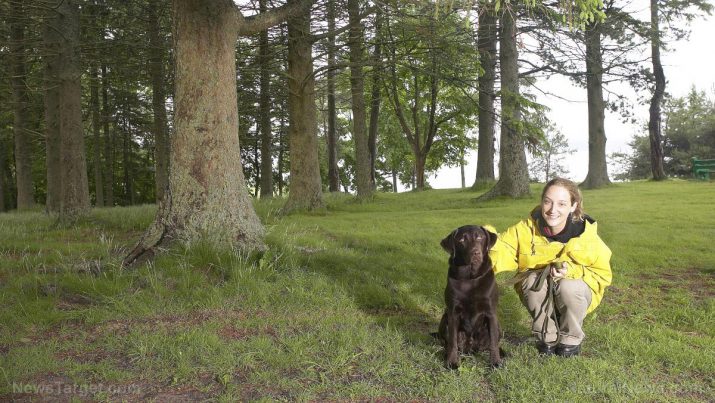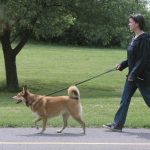
Prepping with pets: How to train your pets so they have a better chance of surviving when SHTF
Tuesday, October 29, 2019 by Zoey Sky
http://www.naturalnewspets.com/2019-10-29-prepping-with-pets-training-for-survival.html

Preppers with dogs know how important their four-legged friends are. Well-trained pets are protective, they’re reliable hunting companions, and they provide companionship in both good times and bad. Start training your dog so they can survive in a post-SHTF world alongside you and your family. (h/t to SHTFPlan.com)
Stocking up on pet supplies
Set aside space in your survival stockpile for your dog’s preferred brand of pet food or kibble. Store kibble for your dog (or cat) in a food-safe grain storage bin that will keep out pests and rodents. Stock up on at least a year’s worth of pet food and rotate your supply to prevent spoilage.
Don’t forget to stock up on treats for your furry buddy. Even pets need treats to comfort them during difficult times. Dogs love peanut butter, but avoid products that contain xylitol as this ingredient can cause hypoglycemia and hepatic necrosis in dogs.
Prepare a spare set of food and water bowls for your pet, with toys that will keep them entertained during a long-term survival scenario. Your pet will also need his own emergency supply of water.
Preparing a pet BOB
When preparing a pet bug-out bag (BOB), pack all your dog’s supplies in a sturdy dog saddlebag, but don’t overload it with too many items. Pack only the essentials:
- Dog food – The weight in a saddlebag must be well-balanced on both sides to prevent it from shifting and sliding off of your dog’s back. Store dog food in two resealable bags and put one on each side of the saddlebag.
- Water – Consider weight distribution when storing water bottles in your dog’s BOB. One medium-sized water bottle on each side of the BOB will do.
- Collapsible food and water bowls – These handy bowls will save space in the BOB.
- Medicines – Meds are crucial, especially if your dog has any existing health conditions. You should also bring flea and tick medicine if you’re bugging out in the woods.
- Pictures and documents – Clear photographs will help you locate your dog if you get separated. Keep a duplicate copy in your own BOB. Include a copy of your pet’s vet health records in his saddlebag.
- Dog sweater – Even dogs with thick fur may still need a sweater if you live in a cold area or if you have to bug out during winter.
- Toys and treats – Toys and treats can help calm down a stressed dog while you’re bugging out.
Tips for hunters
If you hunt, you have an extra source of food for your pet.
Save the chewy hock or the bottom part of a deer or elk’s leg. Boil the meat in mildly salted water, then serve it to your pet. This also helps eliminate waste after a hunt.
Other parts of the animal that are not fit for human consumption, like the liver and other organs, can also be served as food for dogs and cats.
Commands your dog needs to know
Start training your dog while he’s still a pup. These prepper dog commands can help you and your pet survive when disaster strikes.
Stay
This basic command is one of the most important skills your dog needs to have. They should know how to stay put in an emergency.
Barking
Your dog must learn two barking-related skills.
First is how to bark on command to discourage intruders. Second is to stop barking so you can hide from intruders.
Defense
Dogs are naturally protective of their owners, but it’s better to train them so you can stay in control with a command to get them to back off if needed. (Related: The 7 best dog breeds for survival and protection.)
Attack commands often include a voice command with a pointing gesture to let your dog know who to attack.
Take care of your pets, prepare their BOB, and teach them basic commands so you can protect each other when SHTF.
Sources include:
Tagged Under: Tags: animal companions, animals, Collapse, disaster, dog BOB, dog bugout bag, dog training, emergency, family dogs, guard dogs, off grid, pet BOB, pet bugout bag, pet care, pet survival, pet training, Pets, preparedness, Preppers, prepping, prepping tips, self-defense, SHTF, survival, Survival Tips, survivalist





